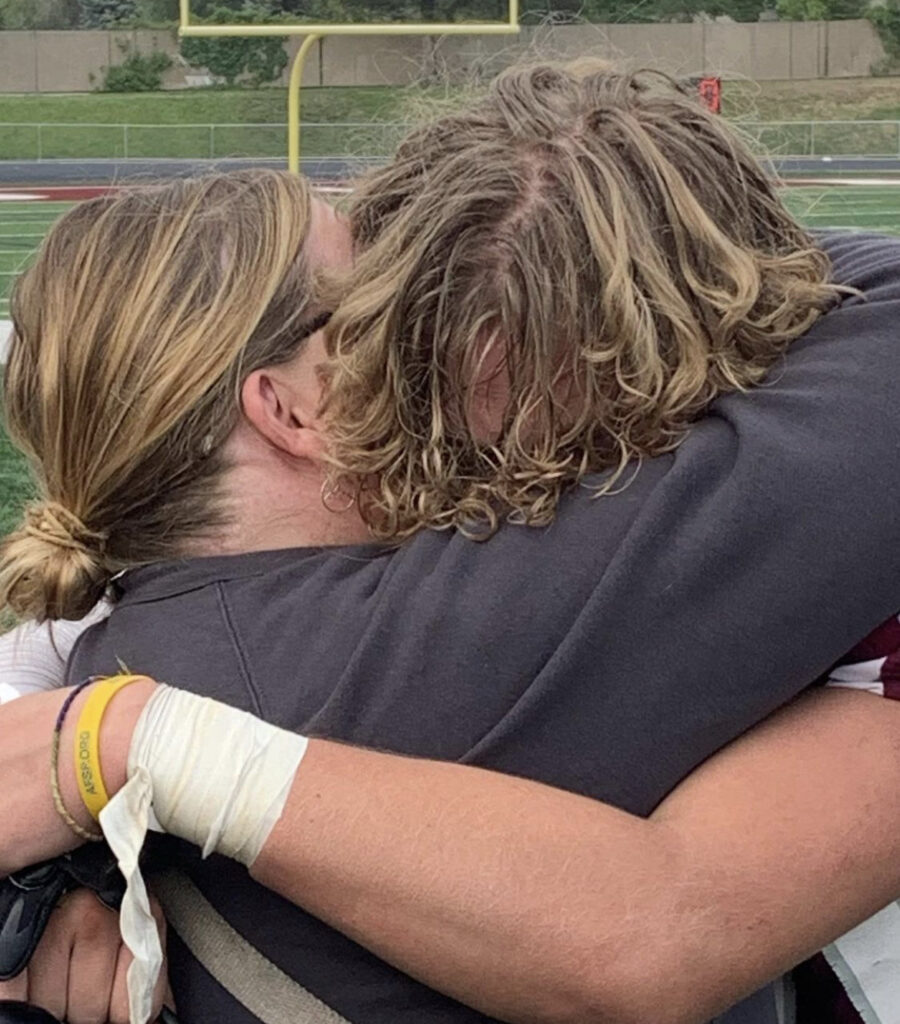
11:30 p.m. I have just drifted off into a deep, peaceful sleep.
11:45 p.m. My phone rings . . . I think I’m dreaming until they hang up and call back.
11:48 p.m. I groggily look at who is calling and see it is my son’s friend, Kaden. I debate about not answering, but then decide he wouldn’t call at that hour unless it was urgent.
11:49 p.m. “Hi Kaden, what’s up?”
“Cheryl, Garrett just texted me and said he took lots of pills trying to end his life. I needed to call and tell you so you can get him to the doctor.”
11:50 p.m. I am wide awake now and in a bit of shock. “Kaden, thank you so much for telling me. You just saved his life.”
This is an actual experience that happened in our home 6 months ago. My 16-year-old son struggles with mental illness and almost daily suicidal thoughts invade his brain. Most of the time he can use the tools he’s learned to dismiss them, but sometimes they are just too strong. Combine that with a pandemic, friend drama, school challenges, and feeling as if he was a burden, and it just became overwhelming to the point that he decided living was too painful. He felt as if it would be easier on our family if he slipped away.
“Not all heroes wear capes.” The courage of that 16-year-old friend to make that tough phone call late at night, saved a life. His mom was right there next to him, encouraging him, and helping him know what to say, but he was the one who made that call. Because of that phone call we were able to get the necessary medical attention . . . if we hadn’t found out about our son until the morning after it would have been a much different outcome.
This is what suicide prevention looks like.
It looks like having the courage to have uncomfortable conversations with our kids about topics like mental illness and suicide, what to do if they are feeling suicidal, and what to do if a friend shares their suicidal ideations or plans with them. It looks like opening up conversations about hard topics so our kids know nothing is off limits to talk about.
It looks like empowering our kids to speak up and tell their friend who shares their suicidal thoughts that they love their friend too much to stay silent and are going to tell a trusted adult. It looks like talking with our kids about supporting a friend who is struggling and not walking away because it’s too hard to be around them. It looks like staying right by your child as they make a tough phone call to a parent or going to talk to a teacher or school counselor about their friend.
Suicide prevention looks like loving our kids enough to be uncomfortable and maybe even scared, but we still ask them if they have thought about taking their life (by the way it doesn’t increase suicide numbers when we talk openly. It decreases the likelihood by quite a bit, see link listed below). It looks like knowing the signs of mental illness and suicidal thoughts. It looks like creating a safe environment in your home that they know they can talk to you about ANYTHING because you are the one to bring up the tough topics first and don’t freak out about the small stuff or when they bring up hard things to talk about.
Prevention looks a lot like a connected, loving relationship that embraces our kids for who they are, exactly how they are. Build a relationship that can withstand the hard stuff and that your kids know home is a soft place to land . . .no matter what happens, no matter their friends or choices, no matter their mental health. They know they are loved and wanted, they know they are not a burden, and they know you will fight for them in their darkest moments.
I am beyond grateful for a mother who empowered her son throughout his life so he could be part of our village and be a lifesaver that late night. Empowering our kids with knowledge and courage to use their voice for their friends and more importantly for themselves. This connection, love, and courage is the very best kind of suicide prevention.
